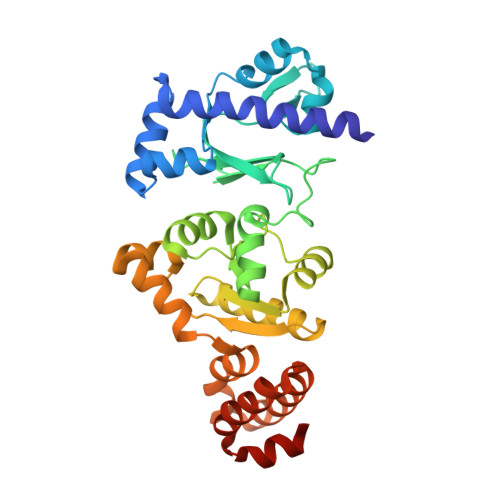Binding Mechanism of Metal-NTP Substrates and Stringent-Response Alarmones to Bacterial DnaG-Type Primases.
Rymer, R.U., Solorio, F.A., Tehranchi, A.K., Chu, C., Corn, J.E., Keck, J.L., Wang, J.D., Berger, J.M.(2012) Structure 20: 1478-1489
- PubMed: 22795082
- DOI: https://doi.org/10.1016/j.str.2012.05.017
- Primary Citation of Related Structures:
4E2K, 4EDG, 4EDK, 4EDR, 4EDT, 4EDV, 4EE1 - PubMed Abstract:
Primases are DNA-dependent RNA polymerases found in all cellular organisms. In bacteria, primer synthesis is carried out by DnaG, an essential enzyme that serves as a key component of DNA replication initiation, progression, and restart. How DnaG associates with nucleotide substrates and how certain naturally prevalent nucleotide analogs impair DnaG function are unknown. We have examined one of the earliest stages in primer synthesis and its control by solving crystal structures of the S. aureus DnaG catalytic core bound to metal ion cofactors and either individual nucleoside triphosphates or the nucleotidyl alarmones, pppGpp and ppGpp. These structures, together with both biochemical analyses and comparative studies of enzymes that use the same catalytic fold as DnaG, pinpoint the predominant nucleotide-binding site of DnaG and explain how the induction of the stringent response in bacteria interferes with primer synthesis.
Organizational Affiliation:
California Institute for Quantitative Biosciences, 374D Stanley Hall #3220, University of California, Berkeley, Berkeley, CA 94720-3220, USA.















